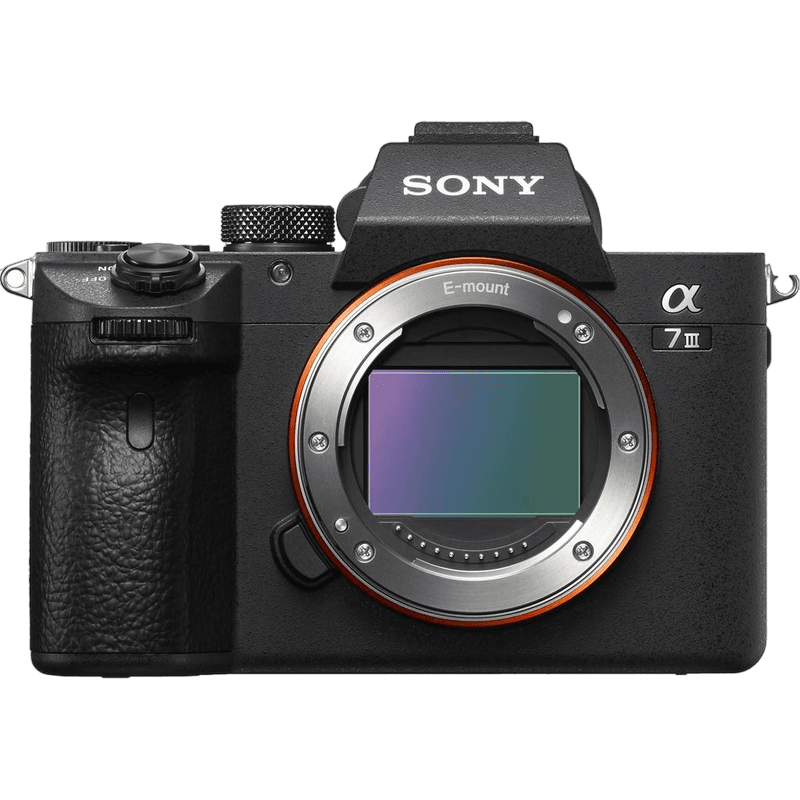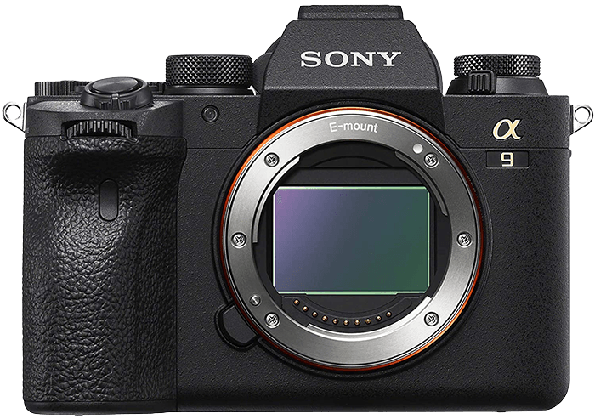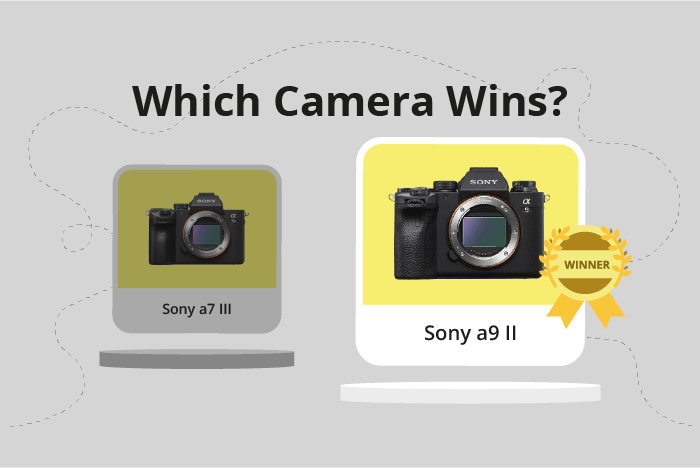Sony a7 III vs a9 II Comparison
Sony a7 III

Sony a9 II

The Sony a9 II comes out ahead with a score of 82 compared to the Sony a7 III‘s 81. Both cameras share key features, being mirrorless systems with similar dimensions and weight. The a9 II, released in 2019, offers better performance due to its higher score.
Despite the a9 II’s superior score, the a7 III remains a strong contender, especially for those seeking a more affordable option. However, the a9 II’s higher score reflects its enhanced capabilities, making it the winner in this comparison.
Sony a7 III vs a9 II Overview and Optics
The Sony a9 II wins in the optics comparison with a score of 82/100, just one point ahead of the Sony a7 III, which scores 81/100. Both cameras share several specifications, including 24.2 megapixels, a CMOS sensor type, Bionz X processor, full-frame sensor size, Sony FE lens mount, and image stabilization. However, there are differences that set them apart.
The Sony a9 II outperforms the a7 III in shooting speed, offering 20 frames per second (fps) compared to the a7 III’s 10 fps. This makes the a9 II a better option for capturing fast-moving subjects and action photography. Despite having a lower DXOMARK score for the sensor (93) compared to the a7 III’s 96, the a9 II still manages to provide better overall performance in optics.
On the other hand, the Sony a7 III has a higher sensor DXOMARK score, which means it can potentially deliver better image quality and dynamic range. This could be beneficial for photographers who prioritize image quality over speed.
Taking these factors into account, the Sony a9 II stands out for its faster shooting speed, making it more suitable for action and sports photography. However, the Sony a7 III is not far behind, with its higher sensor DXOMARK score, which may appeal to photographers who prioritize image quality. Ultimately, the choice between these two cameras depends on individual preferences and the specific needs of the photographer.
Sony a7 III vs a9 II Video Performance
The Sony a9 II and the Sony a7 III are head to head in terms of video capabilities. Both cameras share some common specifications, such as 4K max video resolution, 3840 x 2160 max video dimensions, and 30fps max video frame rate.
Both cameras have the same max video resolution, dimensions, and frame rate, indicating that they perform similarly in these aspects.
Sony a7 III vs a9 II Features and Benefits
The Sony a9 II wins the features comparison with a score of 83/100, while the Sony a7 III scores 81/100. Both cameras share numerous specifications, such as a 3-inch screen size, touchscreen capabilities, flip screen, and the absence of GPS. Additionally, both cameras are equipped with WiFi and Bluetooth connectivity.
The Sony a9 II surpasses the Sony a7 III in screen resolution, boasting a remarkable 1,440,000 dots compared to the a7 III’s 921,600 dots. This advantage provides a9 II users with a clearer and more detailed image when reviewing photos or navigating the camera’s menu.
On the other hand, the Sony a7 III does not outperform the a9 II in any specific feature. Both cameras have similar specifications, and their differences are minimal. The a7 III’s lower score does not imply any superiority in its features compared to the a9 II.
Considering the feature scores and shared specifications, the Sony a9 II stands as the better option due to its higher screen resolution. This advantage contributes to an enhanced user experience when reviewing images and navigating menus. While the Sony a7 III does not surpass the a9 II in any particular aspect, it remains a solid choice for those seeking similar specifications at a potentially lower price point. The choice between the two cameras ultimately depends on the user’s preferences and needs.
Sony a7 III vs a9 II Storage and Battery
The Sony a9 II outperforms the Sony a7 III in storage and battery, scoring 79/100 compared to the a7 III’s 68/100. Both cameras share common specifications, such as having two memory card slots, supporting SD/SDHC/SDXC cards, and utilizing the NP-FZ100 battery type.
The a9 II surpasses the a7 III with its UHS-II compatibility, allowing for faster read and write speeds. Additionally, the a9 II offers USB charging, providing users with more flexibility and convenience when recharging their camera.
However, the a7 III holds a slight advantage in battery life, offering 750 shots compared to the a9 II’s 690 shots. This difference may be beneficial for extended shooting sessions without access to power sources.
Despite the a7 III’s longer battery life, the a9 II remains the superior choice for storage and battery capabilities, mainly due to its UHS-II compatibility and USB charging feature.
Sony a7 III vs a9 II – Our Verdict
Are you still undecided about which camera is right for you? Have a look at these popular comparisons that feature the Sony a7 III or the Sony a9 II:

